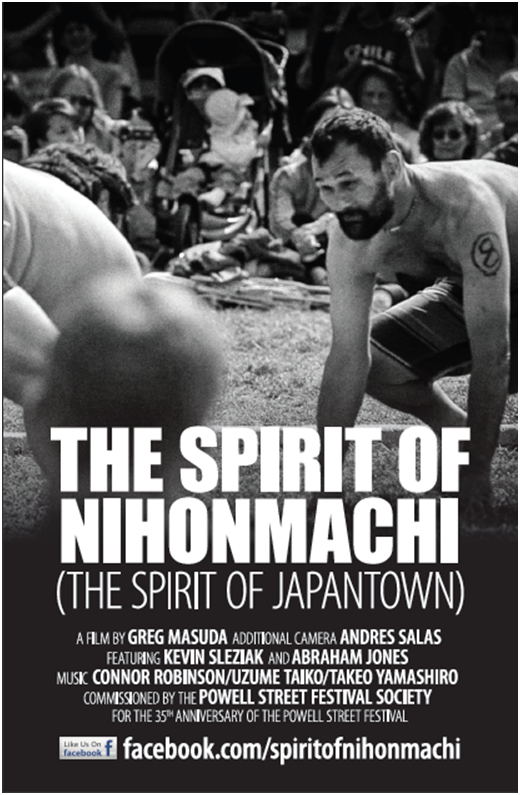| ________________
CM . . .
. Volume XIX Number 39. . . .June 7, 2013
Before the attack on Pearl Harbor, Japantown was a vibrant Japanese community in Vancouver. In the name of security, the Japanese residents were driven from their homes by the Canadian government’s policy of relocation. After the war ended, none returned and the area fell into disrepair. Today, it is known as Vancouver’s East Side. I have been there and found it a frightening place. Kevin, one of the residents featured in The Spirit of Nihonmachi admits, “People who don’t live there are afraid.” Born in Saskatchewan, Kevin has been a resident of the area for 32 years. To him, this is “my home. I would never leave. All my friends are here; I wouldn’t change a thing.” The film follows Kevin as he helps and takes part in the annual Powell Street Festival, a celebration of everything Japanese, established in 1977. This is Kevin’s tenth year of participation. He helps deliver pamphlets and promotions, and he signs up for a number of activities, all the while keeping an eye out for anyone who might cause a disturbance. When he sees someone who could be trouble, he calls on Abraham to encourage the man to leave the park. Abraham, also a resident, came to BC from the United States to play for the B.C. Lions, but he was cut from the team. He worked for 10 years until he was let go. He tried to make a business of constructing street hockey nets, but “big companies made them cheaper and he had to close.” He admits that he became “lazy and unmotivated” and “slept on church steps for two years, not the best thing, but what I would call home.” Both men devote themselves to the success of the festival. The festival, itself, is presented in a series of activities ranging from baseball to Sumo wrestling. This is a vibrant festival with many activities for all ages. The success of the event is clearly due to people like Kevin and Abraham. The film closes with the volunteers taking down the booths and displays. It has been a success. And even though neither Kevin nor Abraham did very well in the Sumo events, they had a great time. The Spirit of Nihonmachi is a delightful film. At 28 minutes, it could easily be used in a regular class with time left over for discussion. It is not at all complicated, and it presents the vitality in a community not normally shown in a favorable light. Kevin and Abraham are only named towards the end of the film, implying that they are just two of the many people involved in making the festival a success. Connecting to the community’s lost Japanese history is important to all, and everyone is having fun. The Spirit of Nihonmachi could be used in a Sociology, Civics, Religion, Anthropology, or History class. It could be shown to show the importance of volunteerism for the sake of volunteering. Also, as we get to know Kevin and Abraham, we see that they are caring decent people who simply take an active part in making their community that much better. Highly Recommended. Frank Loreto is a teacher-librarian at St. Thomas Aquinas Secondary School in Brampton, ON.
To comment
on this title or this review, send mail to cm@umanitoba.ca.
Copyright © the Manitoba Library Association. Reproduction for personal
use is permitted only if this copyright notice is maintained. Any
other reproduction is prohibited without permission.
NEXT REVIEW |
TABLE OF CONTENTS FOR THIS ISSUE
- June 7, 2013.
AUTHORS |
TITLES |
MEDIA REVIEWS |
PROFILES |
BACK ISSUES |
SEARCH |
CMARCHIVE |
HOME |
